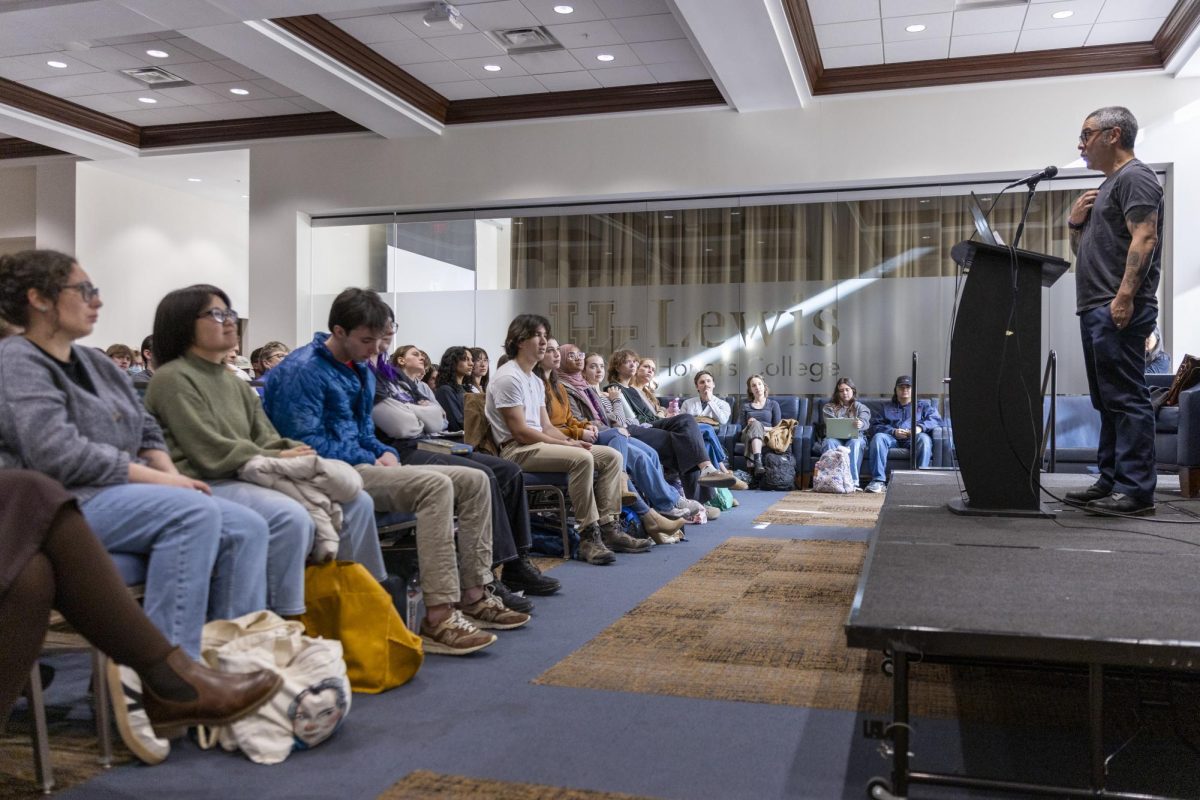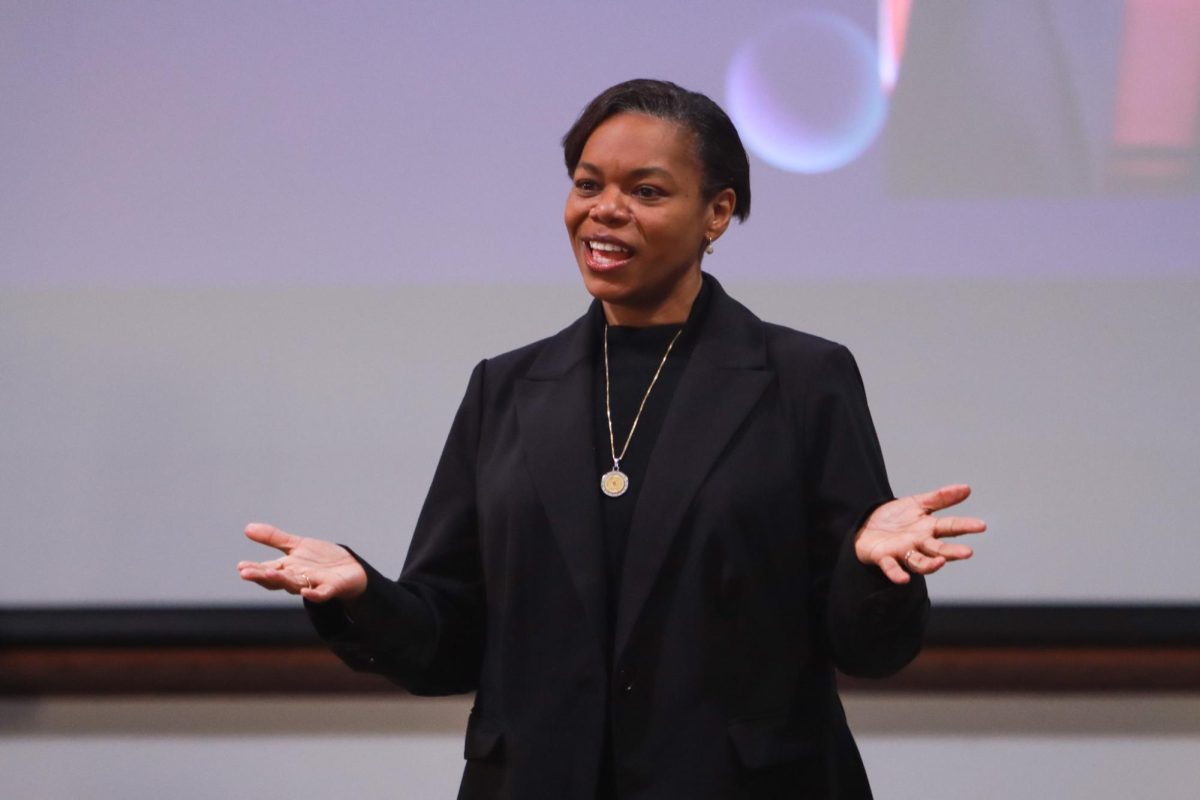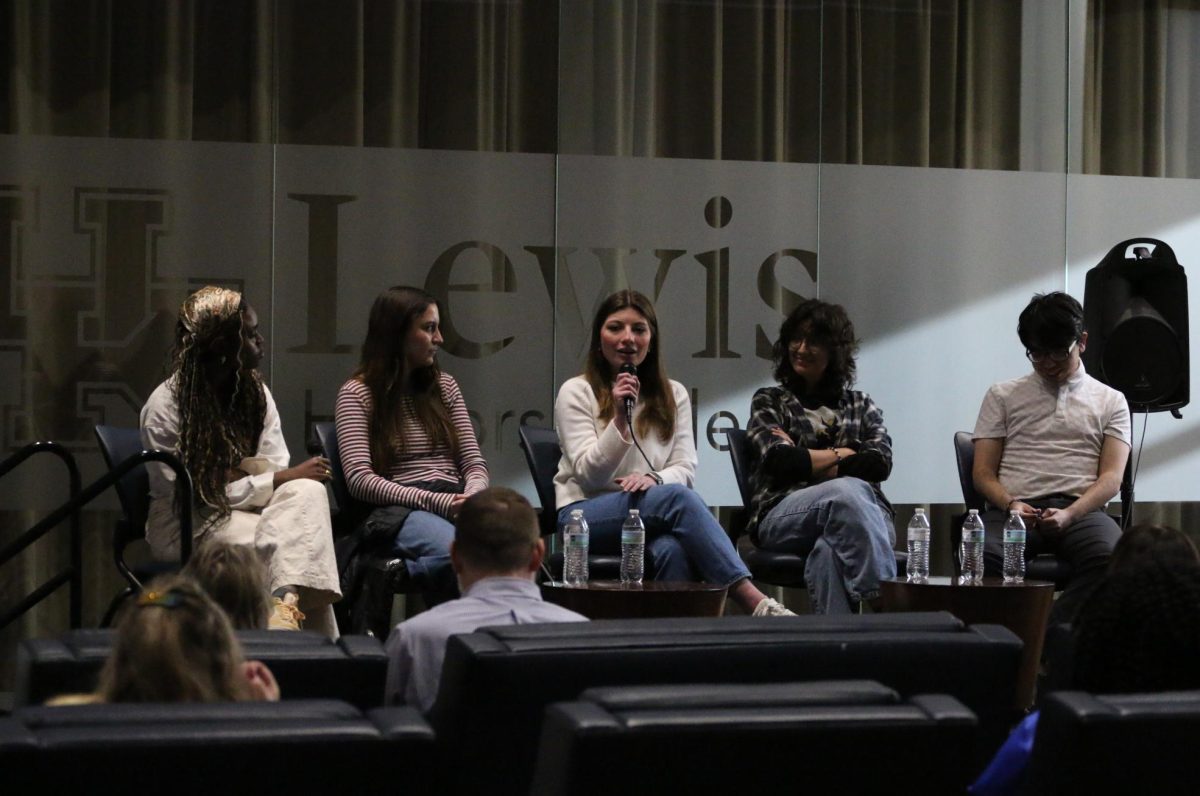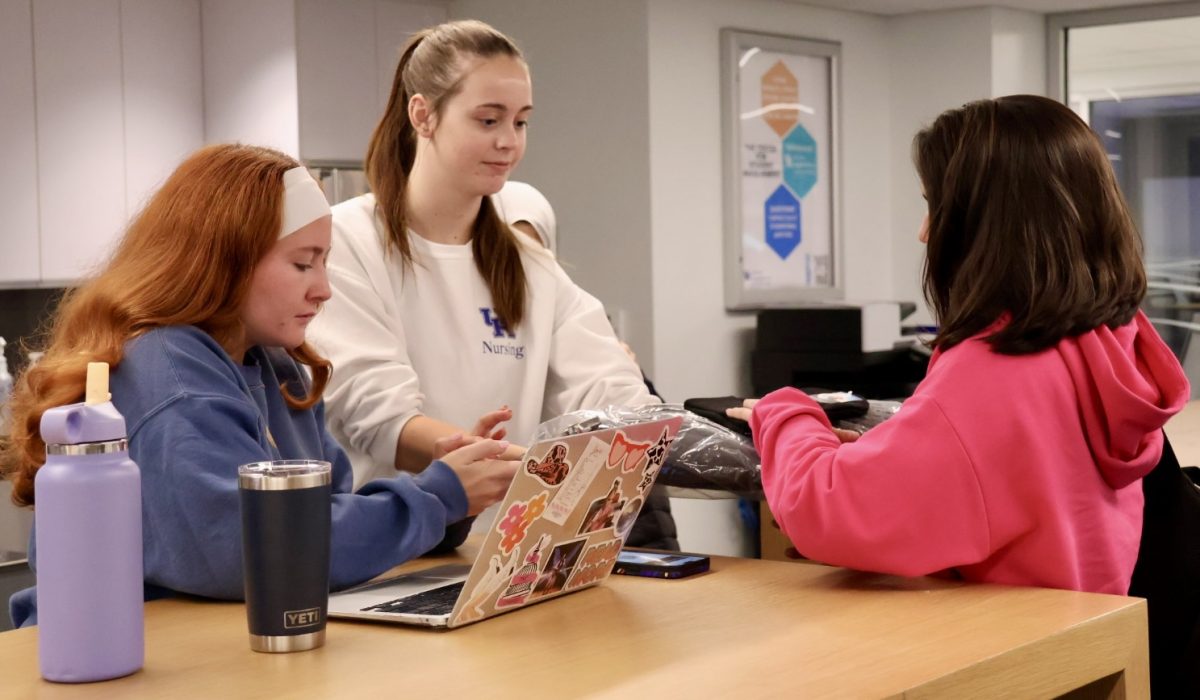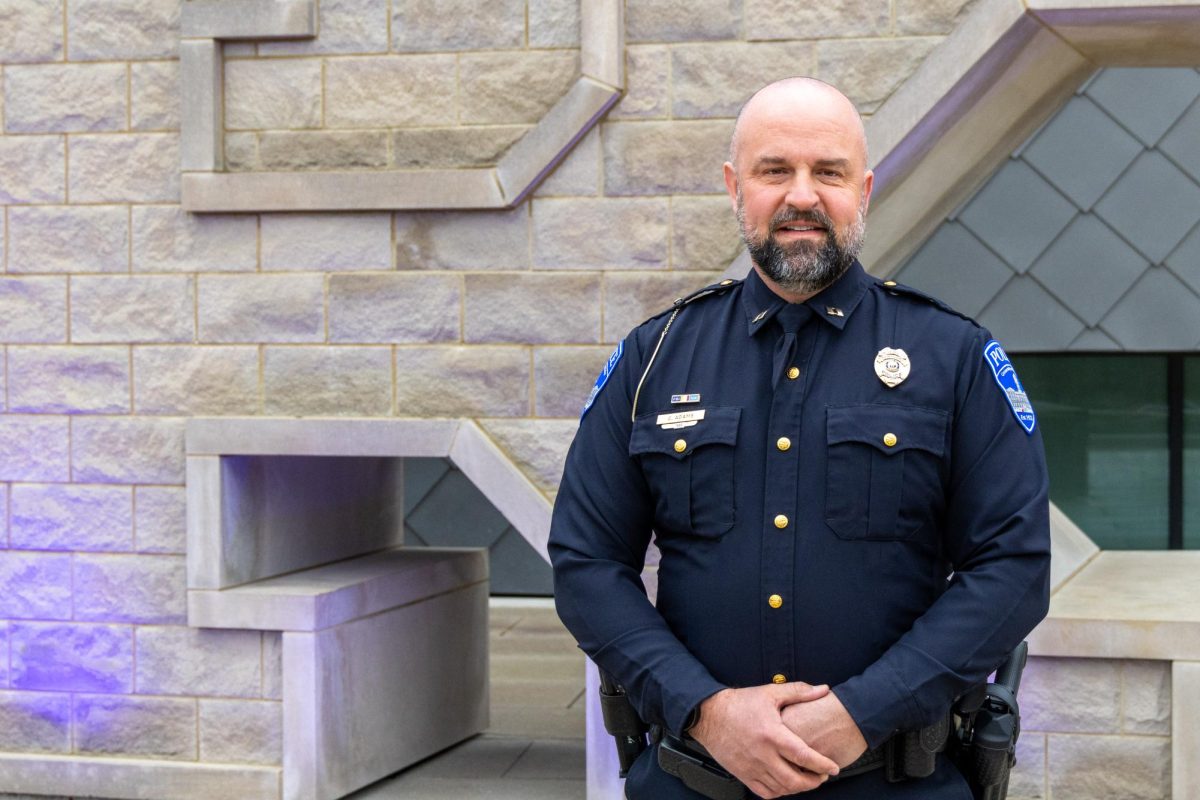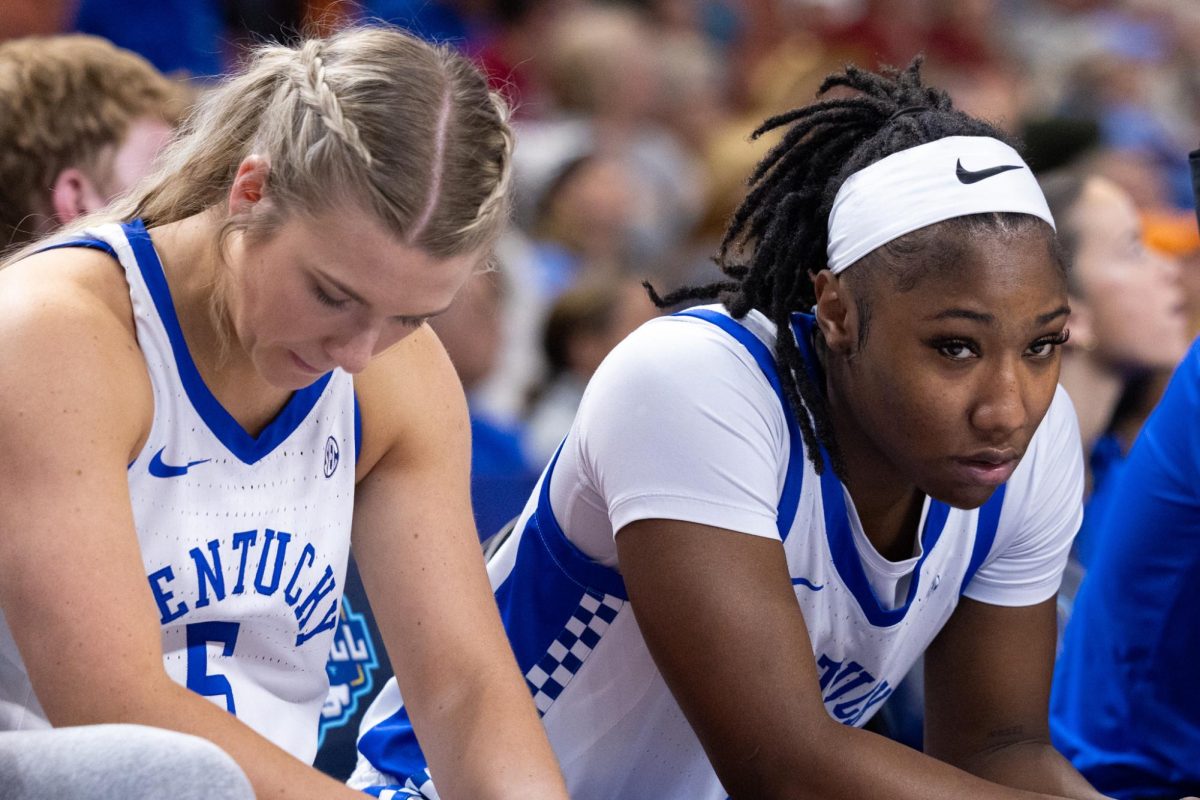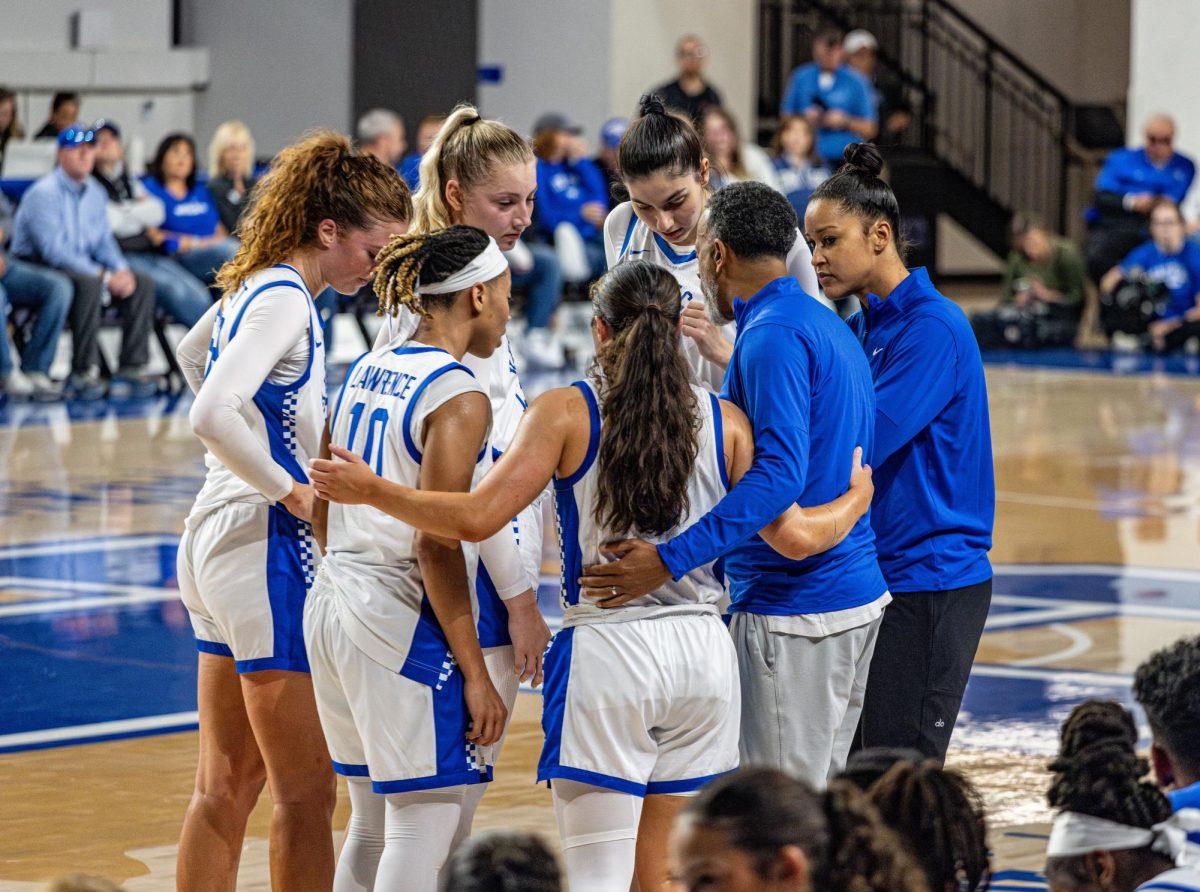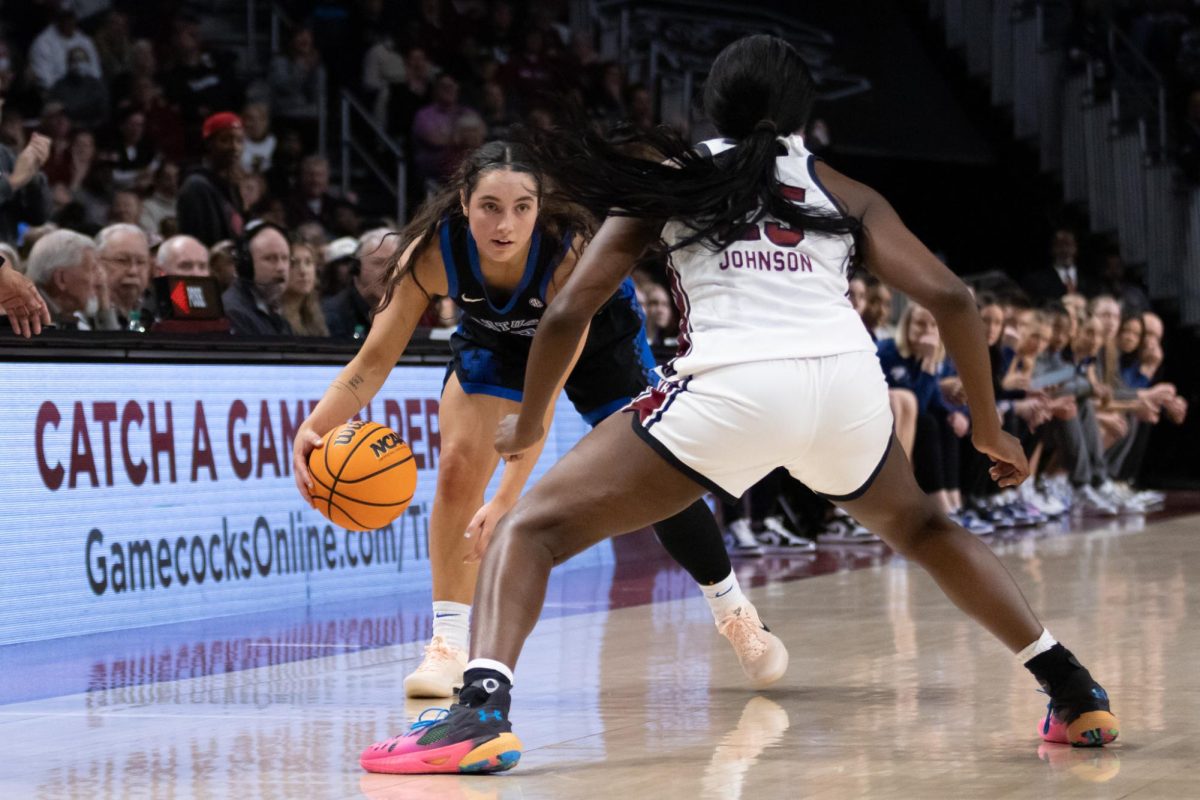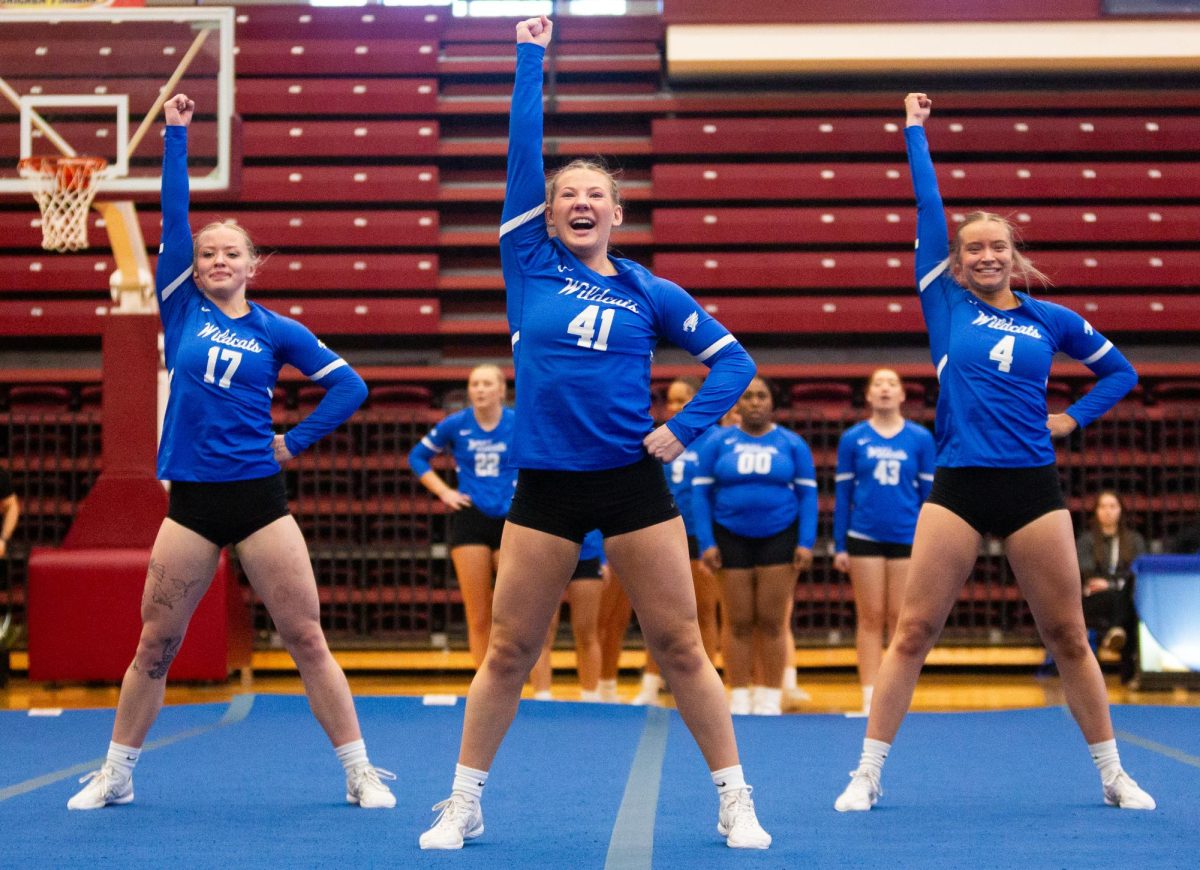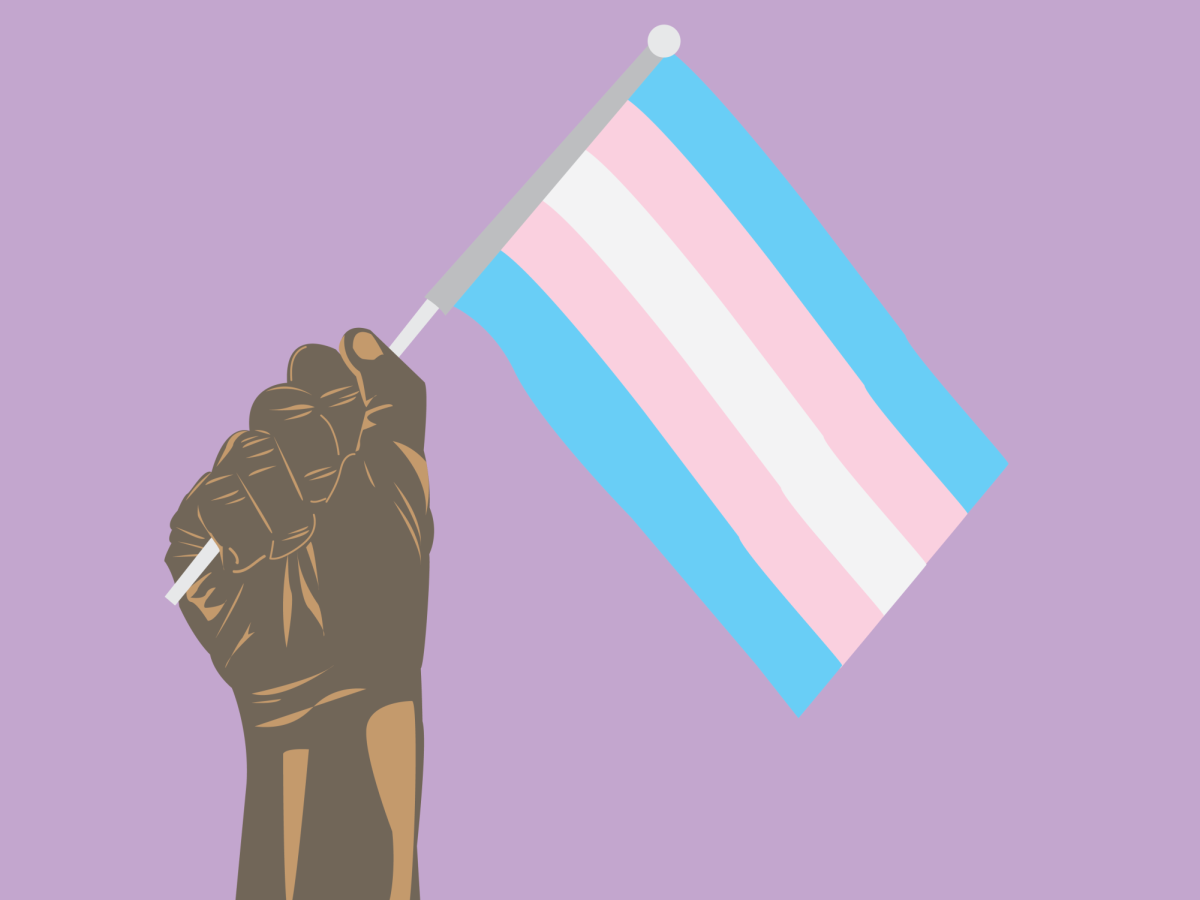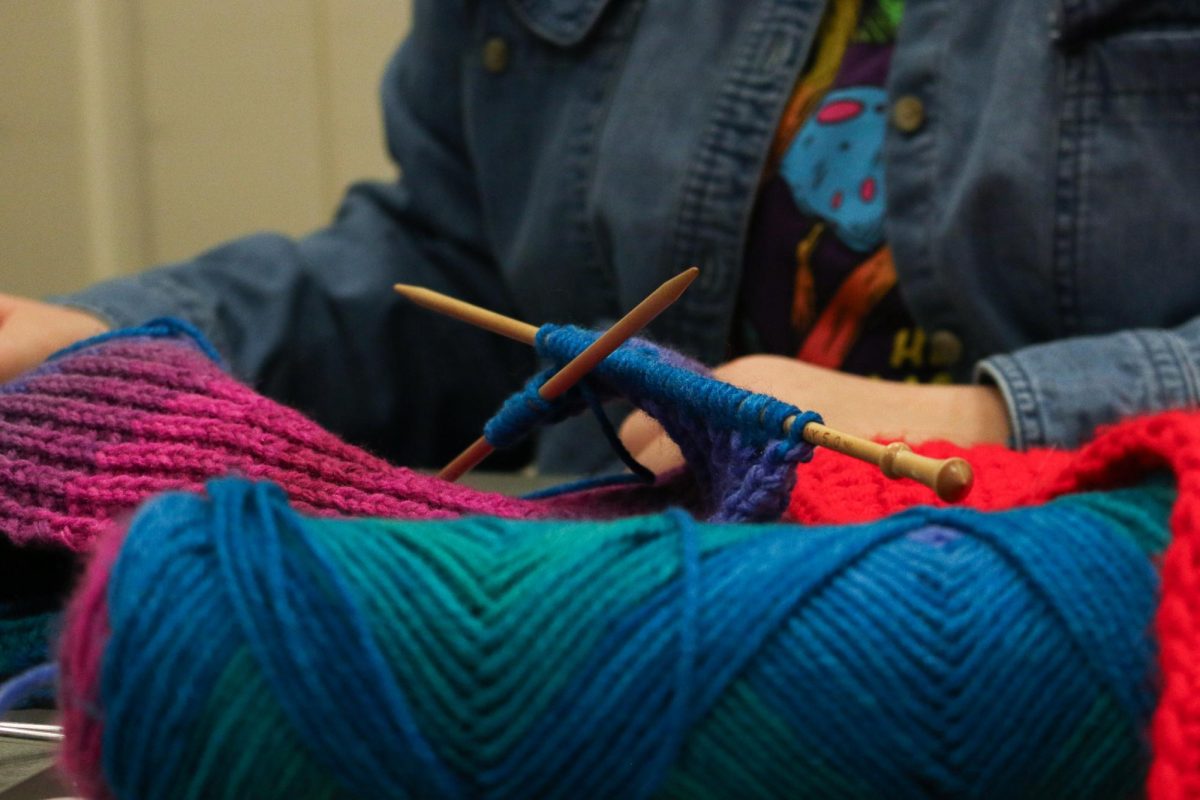Women are finding their place in male-dominated majors
Kiley Alcorn, Kaleigh Shaw and Chelina Ortiz Montanez are all UK students in majors that are typically dominated by males. Photo by Haley Hintz | Staff
April 1, 2019
Being a woman in a male-dominated major is no small feat. There is no doubt that programs like engineering, business and sciences have historically had a large gender participation gap. Within the past decade, there have been many initiatives to equalize these disparities, and women at the University of Kentucky are truly representing by overcoming obstacles that they face in order to increase involvement within their respective fields.
How does UK compare to the national rates of female involvement in some of the male-dominated majors?
Nationally, according to The Society of Women Engineers, 23.1 percent of all degrees in engineering and computer science are awarded to women. At this institution, about 20.7 percent of the College of Engineering was comprised of women in fall 2018.
While these percentages are comparable, it is clear that there is still work to be done in order to recruit and affirm the contributions of women so that students like freshman marketing major Kaleigh Shaw don’t have to feel pressure to change their major in order to be accepted.
Shaw said that she has felt frustrated after “women and men alike share their opinions to guide [her] into a more female-oriented career.” While Shaw has had dreams to work for the Nashville Predators Hockey Franchise, there were people who dissuaded her from pursuing her goals on the basis of her sex, despite her numerous academic achievements and intelligence.
However, she has not let these roadblocks hold her back from following her dreams– because when someone doubts her abilities, Shaw is “instantly motivated to work harder” in order to prove them wrong.
Discouraging advice is only one setback that women in male-dominated majors must face. Additionally, a lack of female representation can be a factor in keeping women from choosing a certain career path.
Chelina Ortiz Montanez, a rising senior with a major in computer science, grew up in Mexico and fell in love with the field when she traveled to San Francisco in high school and met a Google engineer. She has worked tirelessly to inspire others ever since that day because she still “struggles to find clear and visible examples of women who have made it in the field, especially when it comes to faculty.”
Even when girls begin college in a male-dominated field like STEM, there is a 30 percent chance that they will eventually switch into a different program.
One proven way to decrease attrition rates is by forming alliances between the students and faculty who are willing to help guide the student in finding their path to success.
Kiley Alcorn, a freshman studying geological sciences, says that her professors have gone out of their way in “welcoming [her] to make [her] feel appreciated.” Mentorships from professors have the ability to encourage students to continue in their field of study because someone they trust can offer their valued opinion.
Student organizations like the Society of Women Engineers or Women in Business play an integral role in mentoring women to seek out opportunities and advance their career. Through the support of the members of this organization, Ortiz Montanez has been empowered “to attend many conferences for women in engineering and computer science and to apply for crazy cool internships.”
There is an expectation that the number of women who are studying in male-dominated majors will continue to grow after The American Society for Engineering Education found that women’s enrollment in engineering programs saw a 3 percent increase from 2016-2017. Because of funding for curricula that introduces girls to fields such as STEM at a younger age, the United States will likely see further progress.
For now, students like Alcorn across campus will keep striving to achieve by “looking towards the bigger picture” and continuing to study their passions.



